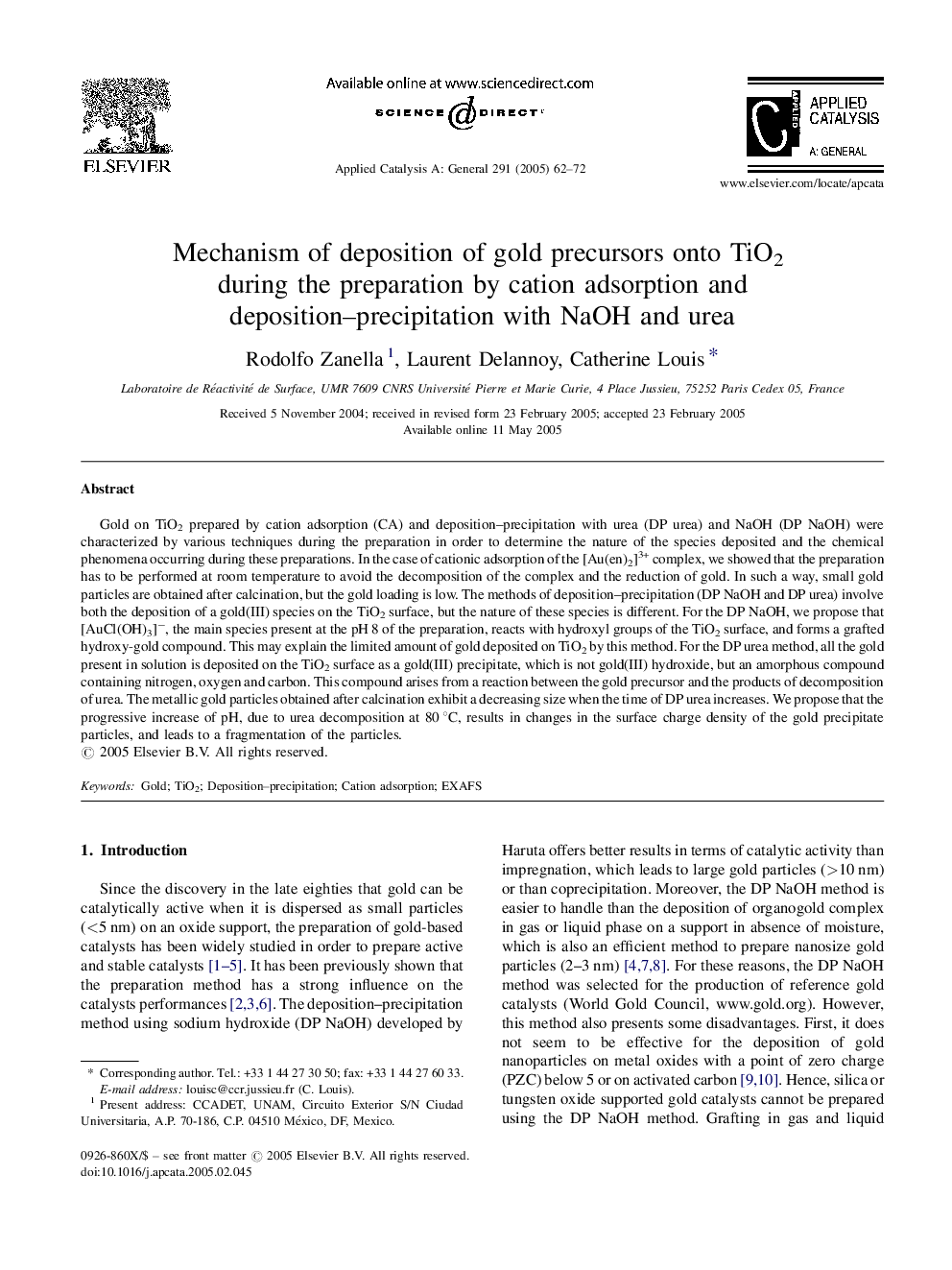| Article ID | Journal | Published Year | Pages | File Type |
|---|---|---|---|---|
| 9607855 | Applied Catalysis A: General | 2005 | 11 Pages |
Abstract
Gold on TiO2 prepared by cation adsorption (CA) and deposition-precipitation with urea (DP urea) and NaOH (DP NaOH) were characterized by various techniques during the preparation in order to determine the nature of the species deposited and the chemical phenomena occurring during these preparations. In the case of cationic adsorption of the [Au(en)2]3+ complex, we showed that the preparation has to be performed at room temperature to avoid the decomposition of the complex and the reduction of gold. In such a way, small gold particles are obtained after calcination, but the gold loading is low. The methods of deposition-precipitation (DP NaOH and DP urea) involve both the deposition of a gold(III) species on the TiO2 surface, but the nature of these species is different. For the DP NaOH, we propose that [AuCl(OH)3]â, the main species present at the pH 8 of the preparation, reacts with hydroxyl groups of the TiO2 surface, and forms a grafted hydroxy-gold compound. This may explain the limited amount of gold deposited on TiO2 by this method. For the DP urea method, all the gold present in solution is deposited on the TiO2 surface as a gold(III) precipitate, which is not gold(III) hydroxide, but an amorphous compound containing nitrogen, oxygen and carbon. This compound arises from a reaction between the gold precursor and the products of decomposition of urea. The metallic gold particles obtained after calcination exhibit a decreasing size when the time of DP urea increases. We propose that the progressive increase of pH, due to urea decomposition at 80 °C, results in changes in the surface charge density of the gold precipitate particles, and leads to a fragmentation of the particles.
Related Topics
Physical Sciences and Engineering
Chemical Engineering
Catalysis
Authors
Rodolfo Zanella, Laurent Delannoy, Catherine Louis,
